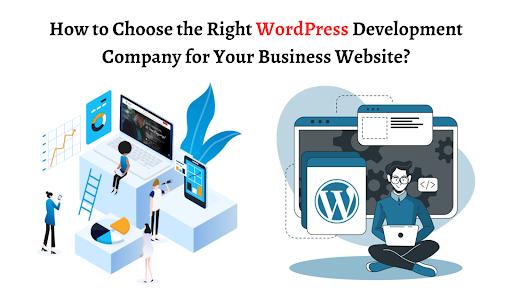How does Web App Development Bridge Innovation and Functionality?

Over the years, advancements in web development have reached new heights. One of them is the addition of web applications, which are relatively new technologies. Earlier, websites were the mode of connecting and obtaining information. But, a website should face performance constraints and have a limited scope of interactivity.
The evolution of web apps has been a game-changer. They have transformed how we interact with the web. Web applications prioritize responsive interactions and provide users with an engaging online platform. While web and web app development share similarities, a web application is more dynamic than a traditional development mode.
However, developing a web application is intricate and requires precision and expertise. The wise decision is to opt for web app development services. The experts will help you solve the intricate development puzzle and deliver the web solution you envisioned.
What is a Web Application?
Web applications are apps built using web development technologies. They are accessible through a browser and do not require further installation. Typically, web apps have front-end and back-end technologies closely related to websites.
Web applications utilize server-side scripts to store and retrieve data, and then client-side scripting presents it through a server-side script on the user interface. This mode of web development offers several benefits to businesses over conventional websites.
Web Applications Types
There are various types of web applications that suit perfectly different business requirements. Let’s dive in to understand some of the main ones.
Static Web Application
These simple web applications include raw HTML and CSS and are best utilized for creating portfolios or digital brochures. The content within the static web app only changes when the developers do it.
Dynamic Web Application
Dynamic web applications are more intricate and require complex coding, making them more interactive than static ones. These web apps utilize client- and server-side scripts to generate content in real-time.
Progressive Web Application
Progressive web apps, or PWAs, offer better web capabilities. Unlike other web apps, they are installable on users' devices and provide a native-app-like experience. Utilizing service workers in the background enables a PWA to work when the internet is low or unavailable.
Single Page Web Application
As the name suggests, this web app type works on a single page. Simply put, an SPA is a type of web app that loads a single HTML page and dynamically updates the content as users interact with it. The benefit of single-page applications is that they effectively restrict the content loading time with each user action. In simple words, instead of reloading the whole page, only the content that the user is requesting will change.
Multi-Page Web Application
MPAs, or multi-page web apps, load the web page entirely to fetch the requested information. They are drastically different from single-page applications and more suitable for websites with large amounts of data, such as eCommerce and educational platforms. MPAs are also suited to handling complex structures and extensive databases.
What Advantages Does Web Apps Offer?
Web applications have become a popular choice among businesses of all sizes. Three of the major types of web apps, PWAs, MPAs, and SPAs, are highly in demand. We have seen the rise of this new shift in web development as more and more businesses and users are utilizing it. Ironically, it is true that both websites and web apps are important, but web applications offer various advantages over traditional desktop applications. These are as follows:
Accessibility
You can access a web application from any device, whether you have a laptop, tablet, or smartphone. These web solutions are entirely multi-platform, making them ideal for businesses operating in multiple locations.
Cost-effective
Web application development is cost-effective compared to traditional software development. This is because it requires less upfront investment in hardware and functionality. Frameworks and tools like low-code platforms can also reduce the extra effort of writing extensive codes and simplify the development process, ultimately reducing the development cost.
Better Convenience
Web Applications provide better convenience to users as they do not need to be downloaded or installed. One such application is a PWA, which requires installation and looks exactly like a native app but won’t take up as much storage as a native application.
Always Updated
There is no need to update a web application, whether a PWA or others. Instead, the website URL with which a particular web app is linked automatically changes as the version of the solution is updated. And, the best thing is that everyone can access it from anywhere and anytime. This is why web applications are always updated to the latest version without requiring any external updates.
Quick Development
Web application development is faster and more economical than traditional software development. It does not require further hardware purchases or other things that would increase the development time. Instead, it simplifies the development process using modern frameworks and tools like Angular.js, Vue.js, React.js, and others.
How Do Web Apps Bridge the Gap Between Functionality and Innovation?
Web applications are the latest developments in the web development market and have changed how we interact with the Internet and technology. However, innovation and functionality are two sides of the same coin, and web apps successfully bridge this gap. This is possible because of their seamless and immersive experience with top-of-the-line features and advancements. Let’s understand how these are achieving this balance successfully.
Iterative Development
We have seen improvements in web applications. The first form was static (a simple structure type of web app). However, its type, features, and functionalities have improved over time. The current world is more AI-oriented and has more advanced features that simplify the usage of the Internet and acquiring information. Web apps are constantly evolving with user feedback and data analysis. This helps guide the development of new features by ensuring that these new advancements can address the requirements of users by staying innovative.
Real-time Data Processing
Integrating new technologies in web or app development became obvious when considering the competitive digital market. Modern web apps are built using real-time data processing tech like WebSocket and server-sent events.
These technologies enable bidirectional communication between the server and the client, which is helpful for instant updates, notifications, and interactive experiences. Real-time data processing technology plays a vital role for those web solutions that require instant updates, like trading platforms or social media feeds.
Progressive Enhancement
Web applications follow the principle of progressive enhancement. This means they can be utilized even on older browsers and devices with limited capabilities. Web application development company experts can provide users with an experience that will not hamper their surfing experience. This principle of web application development is undoubtedly helping companies bridge the gap between innovation and functionality.
Cloud Computing Infrastructure
Web applications are hosted on cloud computing platforms to provide scalable and reliable infrastructure. This eliminates the need for a business to invest in and maintain its own server, automatically reduces the cost of operating a web app, and allows for quick scaling. Cloud computing also facilitates collaboration and data sharing among team members and users.
Web Application Development Process
We have understood web applications' benefits and ability to bridge the gap between innovation and functionality. But, without understanding its development process, the work is incomplete. Remember, the technology stack includes database technologies and client-side and server-side programming. The choice of framework depends on the requirements of your project.
Ideate
The first step is to define the problem you have observed and want to solve with our web application. Ensure that the problem is well-defined to give your project an excellent start. After that, clarify your purpose of creating it and the end goals of your web app.
Development
This is the stage where the actual work starts. Before development, a skilled company will help you create the prototype (an early visual model of a solution that demonstrates functionality and interactivity). If the prototype is up to par, the development process will occur.
Testing
Testing plays a crucial role in the delivery of a functional web application. This stage solves whatever bugs and issues your web solution should have before deployment and launch. The hired team will ensure the mandatory software and usability testing to ensure you can operate your web application without any flaws.
Host and Launch
Just like a website, a web app is also hosted on a server. Simply put, you must purchase a domain name and hosting provider’s service to implement your web app.
Conclusion
Web applications have transformed our web experience to the next level. These solutions offer a dynamic platform with a high degree of interactivity. Canva, Google Docs, Salesforce, etc., are prominent examples of this development mode. We are aware of the benefits these web apps provide and how effectively they bridge this gap. The better decision is to hire a web developer so the expert can help you with the consultation or the development process. Remember, a web application can work effectively only when you know the business requirements and have ideated it efficiently.










Comments